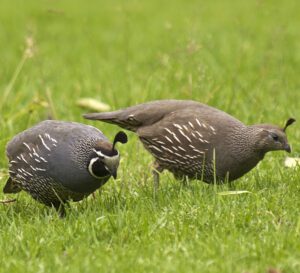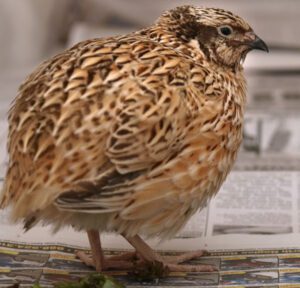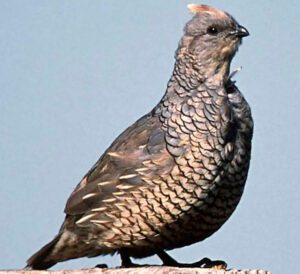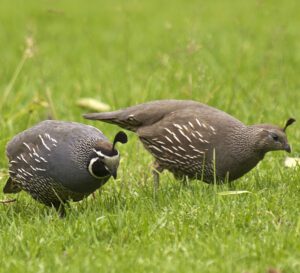The King quail is a species of Old World quail in the family Phasianidae. It is also known as Asian Blue quail, Blue-Breasted quail, Chinese Painted quail and Chung-Chi.
It is the smallest species of ‘true quail’, ranging in the wild from southeastern Asia to Oceania with 9 different subspecies.
In the late 1890s, an attempt was made to introduce this species to New Zealand by the Otago Acclimatisation Society. But the attempt was failed.
Today the King quail is quite common in aviculture worldwide, where it is sometimes misleadingly known as the ‘button quail’. Read some more information about this breed below.
King Quail Characteristics
The King quail is a very beautiful bird with colorful feathers. It comes in many colors including brown, blue, dark brown, maroon, silver and black.
Their feet are of orange color, and the feet are very hard which are able to withstand a continuous life on the ground like many other game birds.

The female King quail is similar to the male in appearance, but cannot come in shades of blue.
Average body length of the mature King quail is around 14 cm. And their average live body weight is around 50 grams. Photo and info from Wikipedia.
Uses
The King quail is raised mainly as pets, or as hobby.
Special Notes
The King quails are very hardy, active and long-lived birds. On average they can live 3-6 years, but can live up to 13 years in captivity.
Clutch size of these birds varies anywhere from 5 to 13 eggs. But they can lay many eggs in captivity. Their eggs are of light, creamy-brown color and slightly pointed at the ‘top’, and roughly ovular in shape.
All the eggs composing the clutch will be laid before incubation starts. And it take around 19 days for hatching the eggs.
The King quail has been very popular for keeping and breeding for many years. They generally live exclusively on the ground, and will not interfere with other birds.
They costs less for purchasing and maintaining, and they have been known to become hand-tame. However, review full breed profile of the King quail in the chart below.
| Breed Name | King |
| Other Names | Asian Blue quail, Blue-Breasted quail, Chinese Painted quail and Chung-Chi |
| Breed Purpose | Pets, hobby |
| Special Notes | Very strong and hardy birds, active, generally a ground-living bird, do very well in captivity, long-lived birds, average lifespan is between 3 and 6 years, but they can live up to 13 years in captivity, clutch size vary from 5 to 13 eggs, but they can lay more eggs in captivity, low cost and less maintaining required |
| Species | Old World Quail |
| Weight | Around 50 grams |
| Climate Tolerance | Almost all climates |
| Egg Color | Creamy-brown and slightly pointed at the top |
| Egg Size/Weight | Around 8 grams |
| Egg Productivity | 5-13 eggs clutch size |
| Body Color | Many (including blue, brown, silver, maroon, dark brown and almost black) |
| Rarity | Common |
| Country/Place of Origin | Asia |






Hi there. I have an issue that I’m not sure what to do about. I have in my large aviary 12 king quail boys…dad and 11 siblings. In my smaller aviary I have my only 3 girl siblings. The issue is, yesterday I found an egg…and again today. The obvious answer would be that there’s a girl imposter in there, but all the boys have the white bibs, so I’m not sure how to figure out how these eggs turned up. I’m watching like a hawk to see if I can single any one of them out, and have photos of them all to clarify their markings if needed. Any thoughts or suggestions would be greatly received and appreciated. Cheers Glenys (Central Victoria Australia)